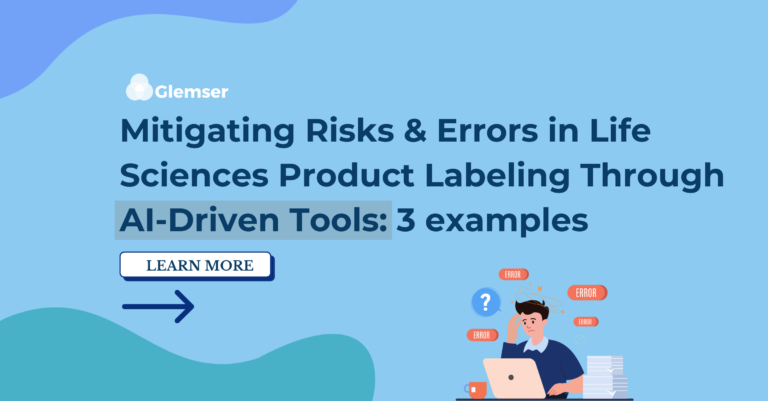
Product recalls in the life sciences industry are not rare. In Q1 2018 alone, for example, 84 pharmaceutical companies in the U.S. reported at least one recall.[1] While these recalls are often attributed to defective or potentially harmful drugs (such was the case in the infamous 1982 recall of 31 million bottles of Tylenol tainted with cyanide), the leading reason for pulling drugs off the shelf is actually product labeling errors.[2]
Given the manual nature of current labeling processes, this fact should not be a surprise – the cutting and pasting associated with transforming Core Data Sheets and label artwork to local label formats inherently makes pharmaceutical companies susceptible to mistakes and oversights.
In this blog we’ll look deeper into how introducing life sciences-trained structured content AI can help life pharmaceutical companies automate their labeling processes to decrease transposition errors, increase label submission quality and compliance, and mitigate the costly financial and reputational risks associated with recalls and lawsuits.
Product Labeling Errors & Drug Recalls
On average, about 4,500 drugs and medical devices are pulled from U.S. shelves each year due to defects that might endanger consumers and/or put the producer or seller at risk of legal action.[3] Reasons for a recall can range from issues with the packaging to reports of life-threatening and even fatal injuries. While most recalls mean something as minor as returning a damaged pill bottle to a pharmacy, they can be as serious as a consumer undergoing surgery to remove a defective implant.
According to a recent study conducted by the patient advocacy organization, Drugwatch, the leading cause of drug recalls globally is pharmaceutical product labeling errors.
For example, Endo Pharmaceuticals in Ireland had to recall two batches of Robaxin® 750mg Tablets, owing to an error in the amount of dosage on the bottles.
In the UAE, JulpharGulf Pharmaceutical Industries recalled Laxocodyl because of a certain medicine for adults that was instead labeled as being for children.[4] “Missing dashes are also very common,” according to a pharmaceutical proofreading expert, “a vulnerable product can lose its efficacy if, for example, ‘Store at 1-4°C’ appears on a label as ‘Store at 14°C.”[5]
Other common contributing factors identified in labeling- and packaging-related error reports submitted to Institute of Safe Medical Practices (ISMP)[6] include: (a) packaging and/or labeling different medications or strengths of the same medication in a similar fashion; (b) labels with company names, logos, corporate dress (aspects of a product’s packaging and labeling that distinguish it from the competition), or colors that are more prominent than the essential drug information; (c) error-prone abbreviations, dose designations, symbols, or other unsafe ways of expressing the name, concentration, dosage, quantity, or strength of the medication on labels; (d) an error-prone design of labels from a human factors standpoint; and (e) misprints of critical information around dosage, strength, amount in the container, preparation, and/or warnings.[7]
Whether due to incorrectly transcribing prescribing information or failure to comply with packaging guidelines set forth by health authorities, product labeling errors can have significant implications for patient safety.
Each year, over a million Americans experience health problems because they don’t take their medicine as their doctor intended.[8] Medication errors including missed doses, wrong dosage forms, wrong time intervals, wrong routes, etc., that stem from incorrect or confusing labels can lead to unintended health consequences that range from minor irritations to antibody-dependent enhancements to death.
Given the seriousness of potential consequences, recalls (both voluntary and involuntary) are generally regarded as the safest course of action for addressing pharmaceutical labeling errors once a drug is in the market.
The Costs of Drug Recalls
Recalling a drug, whether voluntarily or as mandated by health authorities, can result in significant financial losses for the producing company, as well as potential damage to the company’s reputation.
“No one likes errors,” says Dr. Jutta Hohenhoerst. “And proofreaders in industries such as pharmaceuticals or medical devices face an enormous burden. Labeling errors may risk lives. And they also affect the viability of the business and its profitability because recalls can be very costly.”[9]
While the cost of a drug recall can vary widely depending on the scale of the recall and its impact on the company’s reputation, studies estimate that around half of pharmaceutical recall costs result from the subsequent interruption to business that the recall causes.
Manufacturers may also be forced to spend millions on retroactive lawsuits filed against them because of recalled products. For context, the most expensive drug recall to date occurred when Johnson & Johnson recalled 31 million bottles of Tylenol tainted with cyanide in 1982. All in, it cost the company $100 million.[10]
Mitigating Risks & Labeling Errors with AI Tools
Given the financial, reputational, and patient safety implications of product labeling errors, pharmaceutical companies need a way to ensure their labeling process is executed correctly and efficiently.
Leveraging AI-powered, life sciences-trained tools can take many of the human mistakes out of label generation and proofreading tasks, as well as reduce the risk of labeling error recalls more broadly. Below we explore three key ways that AI-enabled tools can help ensure quality submissions and label compliance.
1) Automate the Product Labeling Process to Reduce Errors
AI-enabled tools can automate the most error-prone steps in the label authoring workflow using natural language processing (NLP) and generative AI models that have been extensively trained on life sciences data.
Because many of the tasks that are characteristic of pharmaceutical labeling processes are repetitive in nature and subject to rigid procedures optimizing efficiency and productivity, AI tends to perform more accurately, and with fewer overall transposition errors, than labeling teams.
For example, natural language processing software can crawl existing pharmaceutical data repositories and RIM systems to instantaneously generate local labels via CCDS, eliminating the manual (and therefore error-prone) cutting and pasting associated with transforming Core Data Sheets and label artwork to local label formats.
2) Provide Change Management & Audit Trails
Change management and change bundling capabilities native to AI-enabled tools allow labels to be updated at the source, eliminating the human error associated with making updates across multiple documents.
These tools can overlay existing labeling technology systems to harmonize meta-data properties and attributes and store them as controlled compliant components, allowing labeling teams to update and review specific parts of a label without directly editing the entire document, which might result in additional errors (i.e., typos, accidental deletions). If labels are updated at the source, AI-powered tools can provide a trigger that will inform and prompt the end user of the source data change and recommend the next best action (i.e., which document to apply the update to next) so no critical updates are missed.
Further, audit trail functionality, including approvals and e-signatures, within these tools can help labeling teams and regulatory affairs professionals alike to understand how and why a label was rendered over time and quickly correct errors as they are identified.
3) Improve Label Clarity
Generative AI tools can help pharmaceutical companies transform technical scientific language into sentences and sections that are simple, clear, concise, and familiar for patient-facing labels.
These tools use natural language capabilities to classify the language from CCDS, extract meaning from it to learn the content and context, predict the appropriate sentence structure depending on the desired local label geography, and then transform the data into multiple sentence options that are appropriate for any given local label output. These options provide guidelines for improvement and standardization, which are then reviewed and approved by a “human in the loop” who understands culture, context, and compliance and can ensure labels meet current evolving cultural and health authority requirements in each of the local label geographies.
Broadly speaking, this enables content authors to develop label language that is familiar to patients in the given geography, increasing health authority compliance and patient safety.
Want to use AI to mitigate risks and errors in your product labeling? Contact Glemser today to get started.
[1] Statista Report
[2] Statista
[3] FDA Recalls – How Dangerous Drugs & Devices are Recalled (drugwatch.com)
[4] https://www.artworkflowhq.com/resources/avoid-errors-in-pharmaceutical-labeling
[5] Common Labeling Errors That Lead to Pharmaceutical Recalls – Schlafender Hase
[6] The Institute of Safe Medical Practices (ISMP) is an American 501(c)(3) organization focusing on the prevention of medication errors and promoting safe medication practices
[7] https://www.ismp.org/resources/more-can-be-done-alleviate-errors-associated-pharmaceutical-product-labeling-and
[8] Do You Find Prescription Labels Hard to Read? You Are Not Alone | Quality Matters | U.S. Pharmacopeia Blog (usp.org)
[9] Common Labeling Errors That Lead to Pharmaceutical Recalls – Schlafender Hase
[10] Tylenol made a hero of Johnson & Johnson : The recall that started them all – The New York Times (nytimes.com)


